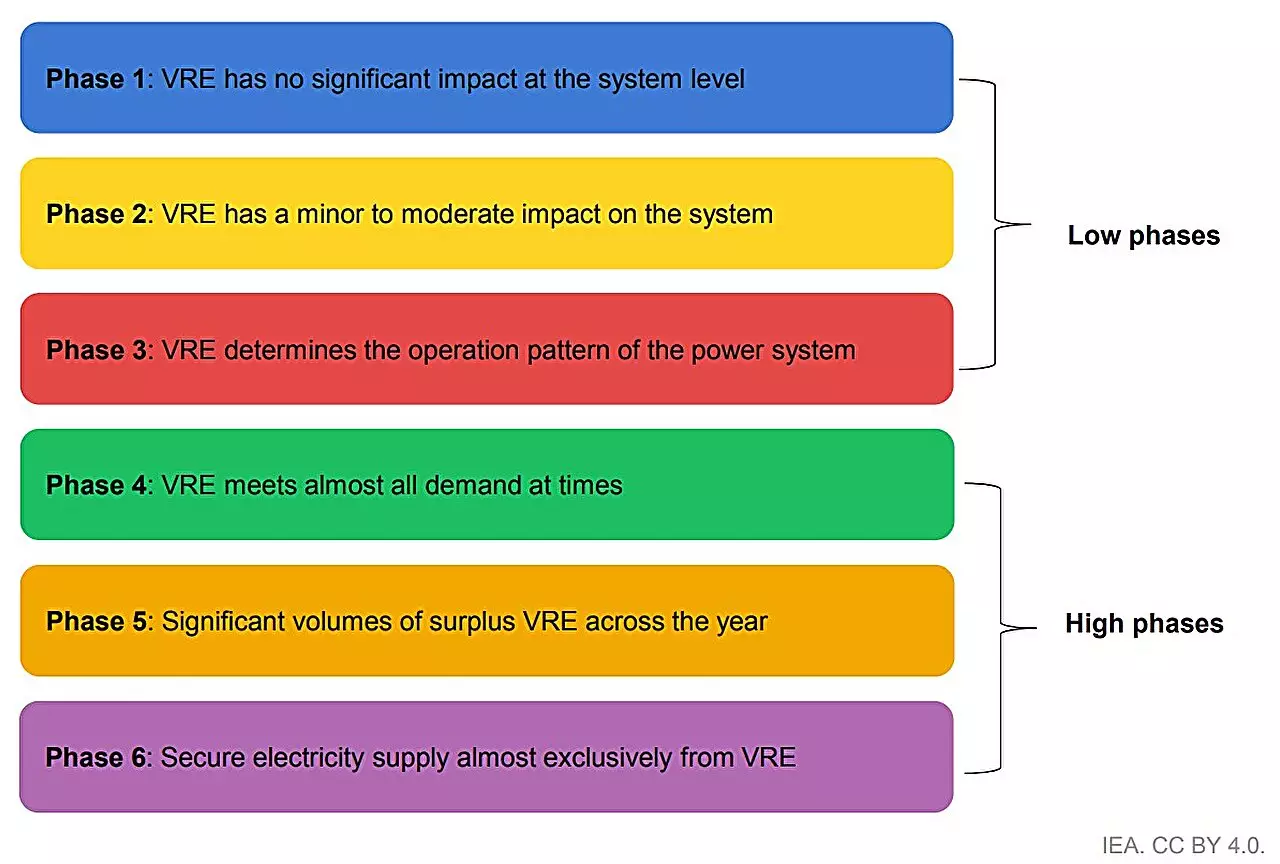In recent years, the global energy landscape has transformed dramatically, with solar photovoltaic (PV) and wind energy installations surging exponentially. This remarkable growth can be attributed to a combination of proactive government policies, technological advancements, and decreased costs associated with renewable energy technologies. Between 2018 and 2023, the worldwide capacity for these clean energy sources more than doubled, marking a significant shift in how we generate electricity. Yet, this rapid expansion is not without its challenges, as highlighted in a recent report by the International Energy Agency (IEA) titled “Integrating Solar and Wind: Global Experience and Emerging Challenges.” The report emphasizes that merely increasing capacity is insufficient; effective integration into power systems is crucial to realizing the full benefits of renewables.
The transition to renewable energy brings forth unique hurdles for policymakers. As solar and wind capacity continues to increase, ensuring that these variable renewable energy (VRE) sources work harmoniously within existing power systems becomes imperative. The IEA report warns that delaying the adoption of necessary integration measures could lead to a significant shortfall in generation potential by 2030—a concerning statistic that underscores the urgency of the situation. If integration issues remain unaddressed, electricity generation from these sources could be as much as 15% lower than projected, ultimately affecting the overall share of renewables in the global electricity mix.
The IEA’s Director of Energy Markets and Security, Keisuke Sadamori, stressed this point, stating, “While there has been significant progress, the realization of our clean energy goals depends on the integration of these technologies.” His observation highlights the dual nature of the challenge: while advancements in renewable technologies continue at a breakneck pace, the corresponding infrastructure and regulatory frameworks must evolve to keep pace.
Global Stocktake of Integration Measures
The report provides a comprehensive analysis of integration strategies across 50 major power systems, which collectively account for nearly 90% of the world’s solar PV and wind energy generation. Through this first-of-its-kind global stocktake, the IEA has identified various approaches that countries can employ to enhance their energy systems’ flexibility and resilience. Notably, many countries with lower shares of VRE in their power mixes are expected to contribute significantly to generation growth without needing drastic systemic changes. The report highlights that initiatives such as improving the flexibility of existing assets and utilizing enhanced forecasting have proven effective when implemented methodically.
However, as the share of renewables increases, the challenges become more complex. Frontrunner countries like Denmark, Ireland, South Australia, and Spain are leading the way in constructing solutions to manage the intermittency associated with solar and wind energy. These nations are developing advanced storage technologies, utilizing innovative grid solutions, and employing diverse strategies to maintain stability and ensure reliable power supply throughout varying seasonal demands.
Addressing the integration of higher levels of VRE into existing power systems necessitates a fundamental rethinking of traditional planning and operational methodologies. The report indicates that most technological solutions to current challenges are either already established or are approaching maturity. Nevertheless, the successful implementation of these technologies hinges on decisive policy and regulatory frameworks, rather than entirely new technological developments.
As nations ramp up their renewable energy deployment, the integration of these resources will require both strategic planning and a commitment to proactive measures. This involves not only investing in innovative technologies but also fostering collaborative efforts between governments, industry stakeholders, and local communities to build a sustainable energy future.
Conclusion: A Call for Action
The journey towards a sustainable energy system lies ahead, and the pathway is illuminated by recent advancements in renewable technologies. However, for countries to genuinely capitalize on these advancements, robust integration frameworks must be prioritized. As emphasized by the IEA report, the time is ripe for decisive action to overcome integration challenges, ensuring that the global energy transition continues to progress securely and successfully. Without these measures, the potential benefits of solar and wind energy could be severely undermined, jeopardizing climate goals and the quest for a sustainable future. The need for a concerted, well-coordinated approach has never been more urgent, paving the way for a greener, cleaner tomorrow.

